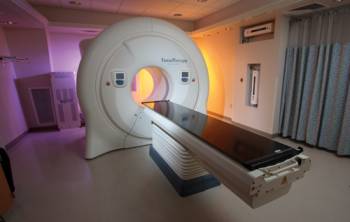Nasopharyngeal Cancer
Nasopharyngeal cancer (NPC) or commonly known as “nose cancer” occurs when cancer cells develop from the tissues in the nasopharynx, the area behind the nasal cavity and above the back of the throat. Because of its unique features, nasopharyngeal carcinoma (NPC) is often discussed as a separate entity from other head and neck cancers.
During the period 2003 and 2007, it was the seventh most common cancer among men in Singapore and 12th among women, accounting for 4.6 per cent of cancer deaths among men and 1.7 per cent of cancer deaths among women. Among the three major races in Singapore, the incidence of NPC is highest in the Chinese followed by the Malay, and is rare in Indian.
What Causes It?
 Chinese from endemic regions like Hong Kong and Southern Chinese have the highest risk of getting NPC. Chinese from other regions and Chinese migrating from an endemic area to a lower risk area also have an elevated risk of NPC. Populations from North Africa and Middle East countries also have an intermediate risk of getting NPC. In Singapore, the risk of NPC in male is about 3 times that of females.
Chinese from endemic regions like Hong Kong and Southern Chinese have the highest risk of getting NPC. Chinese from other regions and Chinese migrating from an endemic area to a lower risk area also have an elevated risk of NPC. Populations from North Africa and Middle East countries also have an intermediate risk of getting NPC. In Singapore, the risk of NPC in male is about 3 times that of females.
While the exact causes of the cancer are unknown, Epstein Barr virus (EBV) infection is considered important in the development of NPC. Risk factors linked to NPC include excessive consumption of salted fish at an early age, high consumption of preserved or fermented food, and cigarette smoking. There is also a familial trend, with first-degree relatives of NPC patients having a higher risk of developing nose cancer than those without a close relative with NPC.
The good news on nose cancer is that the incidence of the disease is declining in Singapore. This may be partly attributed to a younger generation with wider food choices and lower intake of salted fish and preserved vegetables.
Signs & Symptoms
Symptoms of NPC include
• Nose bleed or nasal obstruction
• Blood stained sputum
• Ear symptoms, including block ear, ringing noise, hearing impairment
• Headache
• Neck swelling from enlarged lymph nodes
• Drooping of eye lid, double vision, facial numbness from cranial nerve nvolvement
• Symptoms from advanced disease like weight loss, tiredness, bone pain, etc
Diagnosis & Assessment
When nose cancer is suspected, your doctor can visually inspect the back of the nose using a nasoscope. A small flexible lighted tube is inserted through the nostril into the back of the nasal cavity, and any abnormal looking area or abnormal growth can be biopsied for pathology confirmation of malignancy. If enlarged lymph node is found, a needle biopsy may also be done.
 How is NPC assessed?
How is NPC assessed?
The prognosis and treatment options depend on the stage (extent) of the NPC.
The following are associated with more advanced stage and thus higher risk of recurrence post treatment:
• Invasion of the base of the skull by the primary tumour (stage III)
• Involvement of surrounding (cranial) nerves (stage IVA), which may present as drooping of eye lids, double vision, etc
• Enlargement of neck lymph nodes, especially when the nodes are larger than 6am (stage IVB), involving both sides of the neck (stage III), or involvement of the nodes in the supraclavicular fossa (at base of neck, above the collar bone, stage IVB).
The common sites of distant metastases in NPC include the bones, lungs and liver. These patients have advanced stage IVC disease, and treatment aim is palliative.
Treatment & Care
For patients with non-metastatic NPC (sage I to IVB), the primary treatment is radiotherapy.
Radiotherapy uses high-energy rays to kill cancer cells. It affects cells only in the treated area. In NPC, the treated areas include the posterior nasal space as well as both sides of the neck. Newer radiation techniques, like image-guided radiation therapy (IGRT), is able to deliver the radiation to the intended area more precisely, resulting in better tumour control with less side effects (including less dry mouth).
Radiotherapy alone is the treatment of choice for early stage NPC.
For patients with high tumour stage (invasion of base of skull or presence of cranial nerve deficit) and/or high nodal stage (large nodes, bilateral neck nodes or nodes that extend to the base of the neck), chemotherapy is given with radiation to improve the treatment outcome.
The role of surgery in NPC is limited in the management of NPC. Surgery may be considered in patients with recurrent tumour in the posterior nasal space without any other site of disease. A neck dissection may also be considered in patients with persistent neck nodes post radiation, or in patients with neck node recurrence as the only site of disease.
Chemotherapy is the main stay of treatment in patients with metastatic disease, and in patients with recurrent disease post radiation.
What kind of support is available?

CanHOPE, is a non-profit cancer counselling & support service initiated by Parkway Cancer Centre.
As part of the holistic approach towards cancer treatment, CanHOPE works closely with the medical & allied health professionals, offering a wide range of resources & information about cancer in helping patients & their caregivers to make effective, informed decisions in their treatment journey.
Join us in our support programmes that are available on a monthly basis.
CALL our CanHOPE counsellors: +65 67389333 or e-mail:
What Is Nasopharyngeal Cancer? originally appeared on Parkway Cancer Centre and has been republished with permission
Further Reading
The article above is meant to provide general information and does not replace a doctor's consultation.
Please see your doctor for professional advice.
